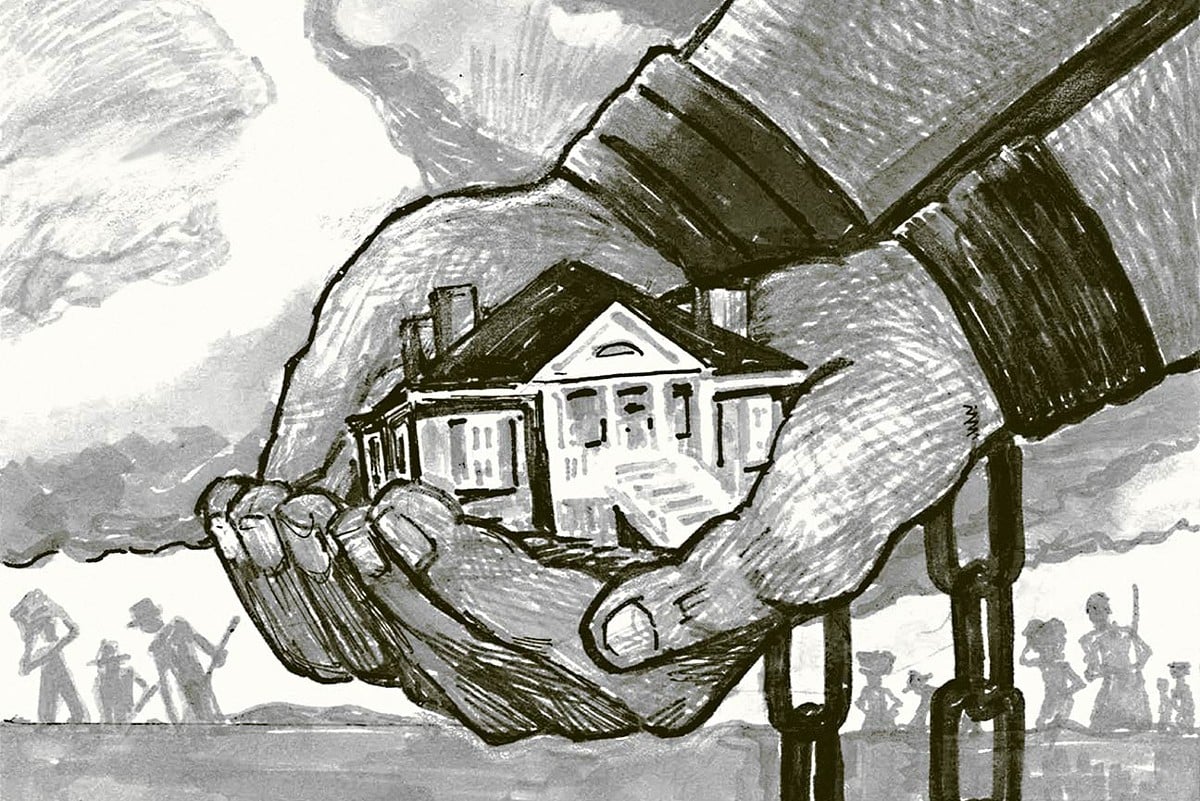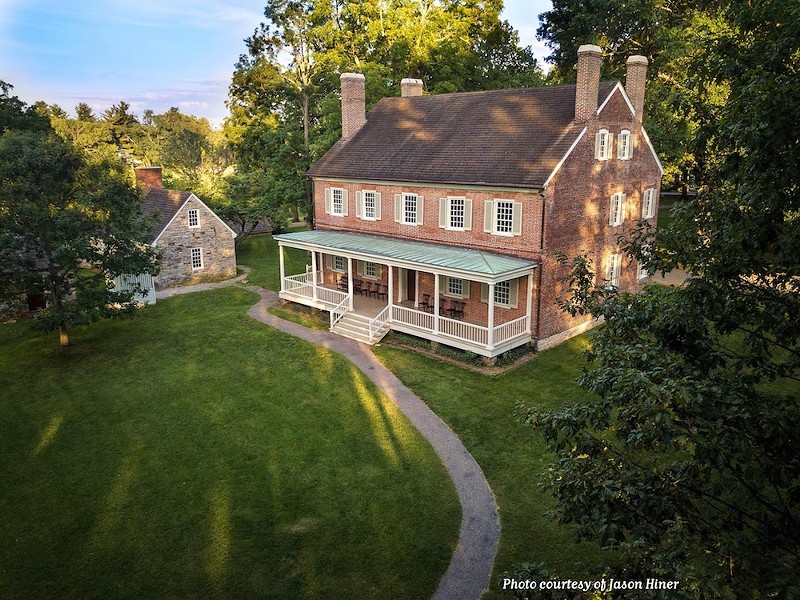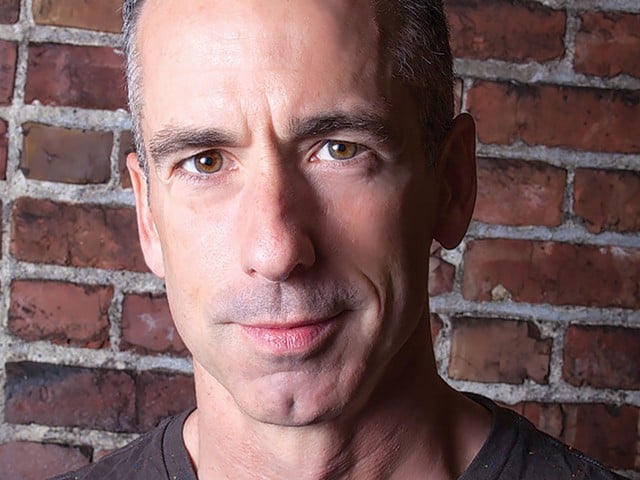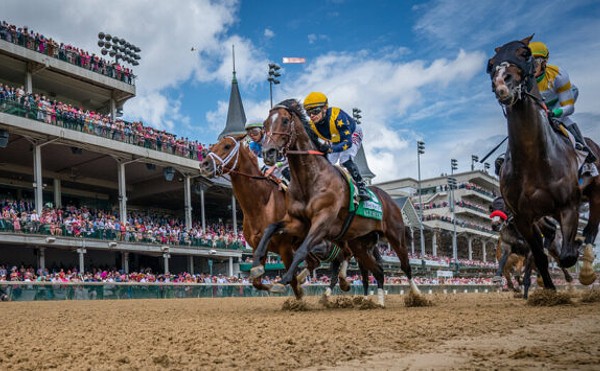I wasn’t happy when an ad for the “Soul Cleanse Yoga Festival” popped up in my Facebook feed and I saw several of my friends — my white friends — had marked themselves as interested in going.
The problem?
The yoga festival was being held at Farmington Historic Plantation.
I’m no expert on how to care for your soul, but it didn’t seem plausible to me that you could cleanse your soul at a site of historic trauma. A lot of people seem to be taking a light-hearted approach to symbolic places: People have Instagrammed photos of themselves practicing yoga on the Holocaust remembrance memorial in Berlin.
Yes, on it.
People were scaling the concrete slabs that represented lost lives to snap the perfect pic. I’ve been to this memorial. It is quiet and solemn, as it should be. An artist decided to shame them by Photoshopping Nazi concentration camp images into the background of the amateur yogis’ photos.
I wondered: Would Farmington be such an idyllic space for a yoga retreat if the sounds of enslaved people being whipped and suffering played on a loop in the background?
Downward dog to that.
I’d later learn that Soul Cleanse is the name of the yoga company, not necessarily the objective of the festival. But unaware, I made a Facebook post hoping each and every attendee of the festival was haunted by the spirit of deceased enslaved people, and then I went on about my day. Siiiiike!
I pitched a story about this to my LEO editor who immediately asked me, “Have you ever been to Farmington?”
No! It’s a plantation.
I told him I figured my ancestors had spent more than enough time on plantations against their will for me to ever voluntarily go to one. The closest I’d come to being on a plantation was during freshman orientation when UofL for some reason took us on a field trip to Locust Grove. Students had not been prepped beforehand, so I have fuzzy memories of experiencing dissonance when the tour guide was showing us some fancy aspect of the house, and all I could think, “But There Were Slaves Here!” (Side note: I had this thought back in 2003 before the shift in language from “slaves” to “enslaved people.”)
Their lives at Locust Grove were never fully addressed.
Years later, in New Orleans, I had a near run-in with a plantation when I hopped on a convention center shuttle and realized something was up because every seat was filled with tiny, white-haired white women. I asked the driver where the shuttle was headed. He said, “A plantation tour.” I stumbled backward off the bus shouting, “You aren’t taking me back!”
The ladies look mortified.
I’d done everything in my power to avoid going to a plantation, but now I was headed there for a story.
Destination Farmington Plantation
I knew where Farmington was because I often pass it while going down Bardstown Road. What I didn’t know was that Farmington, completed in 1816, was the home of John and Lucy Speed. J.B. Speed, for whom the Speed Museum and UofL’s engineering school are named, was their grandson. According to Farmington’s website, “The Historic Home was the center of a thriving 550-acre hemp plantation that was sustained by nearly 60 enslaved African-Americans who lived in cabins on the property.”The Speed family’s wealth was built on the backs of the enslaved, which, to be honest, isn’t unusual or surprising in the United States.
When I mentioned the Speed connection to a friend, he said, “Ugh. I’m never going to that museum again.”
But I don’t think it’s practical, or even possible, to wash your hands of every institution that’s benefited from the blood and labor of chattel slavery in this country. So where do you draw the line? What responsibility do these institutions have to the communities they’re in?
Before heading to Farmington, I chatted on the phone with Dr. Julia Rose, author of “Interpreting Difficult History at Museums and Historic Sites,” to get a better understanding of how we should engage with these places of trauma, and how the people employed at them should engage the community. Dr. Rose is the director and curator of the Homewood Museum at Johns Hopkins University. Homewood was the home of the Carroll Family and at any given time there were anywhere from two to 25 enslaved people toiling away at Homewood. (Charles Carroll, a signer of the Declaration of Independence, gave the land, the money and the enslaved labor for Homewood to his son as a marriage gift.)
Dr. Rose said that museums are beholden to do “public good,” but that’s a subjective term. “On the other side of the equation, there’s the question of: ‘How do you sustain a nonprofit, historic site?’ Because revenue’s very important. Especially in the 21st century.”
Competition for money has increased since the U.S. bicentennial in 1976, when the number of historical sites, historic houses and museums open to the public surged nationwide. This increased appreciation in preserving our nation’s history did not lead to increased funding, she said.
That has meant historic sites sometimes have to get creative about how they raise funds, like say, for instance, hosting a yoga festival.
Dr. Rose said she felt it was possible for a yoga festival to be held in a respectful manner on a plantation, but she would oppose hosting more “jovial activities,” such as proms and weddings.
“We do not do weddings,” she said about Homewood, adding, however, that the site is developing a rental program for meetings, business presentations and small gatherings.
My conversation with Dr. Rose led me to another question:
What’s the point of preserving a plantation if it doesn’t honor and respect the lives of the people who were oppressed there?
The dialogue I was creating around historic plantations began to feel like an extension of the national conversation around Confederate monuments. While some argue these monuments should be saved so we can remember our history, I seriously doubt anyone looks at statues of Confederate soldiers and leaders in their heroic poses and reflects on the trauma and harm they perpetrated. They are clearly the ones being celebrated, not the oppressed.
Besides, a statue is too passive.
There needs to be an active component that focuses on telling the true history. And that’s what I found at Farmington.
‘We are very open about slavery’
At Farmington, I met with then-Executive Director Diane Carman-Young (since the interview, she left to become a second-grade teacher and was replaced by Kathy Nichols). Carman-Young agreed with much of what Dr. Rose told me about the difficulty of funding a historic site. Farmington is 100-percent privately funded. It must raise $200,000 annually to maintain its 18 acres and 200-year-old house.“To keep our doors open and fulfill our educational mission ... It takes a lot of money. With that being said, we’re always very sensitive. Atrocities happened here,” Carman-Young said.
Said Nichols: “You can’t separate the story of Farmington from that of the history of slavery in Kentucky. Nor can you adequately tell one story without the other. They are irrevocably entwined.”
Every Farmington tour begins at the memorial to the enslaved people, created by black sculptor William M. Duffy, and around 2008 it changed its name from Farmington Historic Home to Farmington Historic Plantation to be more transparent about its past.
“We are very open about slavery. We do not try to paint the Speed family as a family that cared for their slaves,” Carman-Young said. “There were over 50 enslaved African-Americans here, and we have most of their stories.”
Many Jefferson County Public Schools students and students from the Catholic school system visit Farmington on field trips. The docents are trained to speak to everyone, from young children to the elderly, about the history of slavery at Farmington.
When I asked her about weddings held at the plantation, she said wedding guests are given pamphlets explaining the plantation’s history, and it is made clear that Farmington is a museum first — not a wedding venue. Rules include that weddings are not held in the house, but are limited to the pavilion, and care is taken to ensure the event is conducted appropriately. Read: You are not going get to play out any “Gone with the Wind” fantasies at your nuptials.
So, even if you’re visiting Farmington just to indulge in an evening of smooth tunes at the annual jazz festival, you’re also going to hear about the full history of the site.
To be clear, Farmington wasn’t “hosting” the yoga festival, but, rather, had rented the space. The festival will return to Farmington on July 28, for a second year.
Carman-Young said Farmington’s history would be acknowledged, and the festival would be held in the pavilion.
Like the heads of most nonprofits, Carman-Young would prefer donors simply flooded her with funds so Farmington wouldn’t have to host so many events and would be freer to focus on the educational aspect of their mission.
Until then, however, Farmington continues to be upfront at every event about the enslaved people who did the backbreaking labor that made the Speed’s comfortable lives possible, she said.
I asked Ashley Baldwin, organizer of the Soul Cleanse Yoga Festival, to speak with me. She said in a statement via email, “The Soul Cleanse Festival allowed yoga practitioners a day to deepen their practice and build community. We are happy to have partnered with Farmington for the festival and contribute to the preservation of a piece of Louisville’s history.”
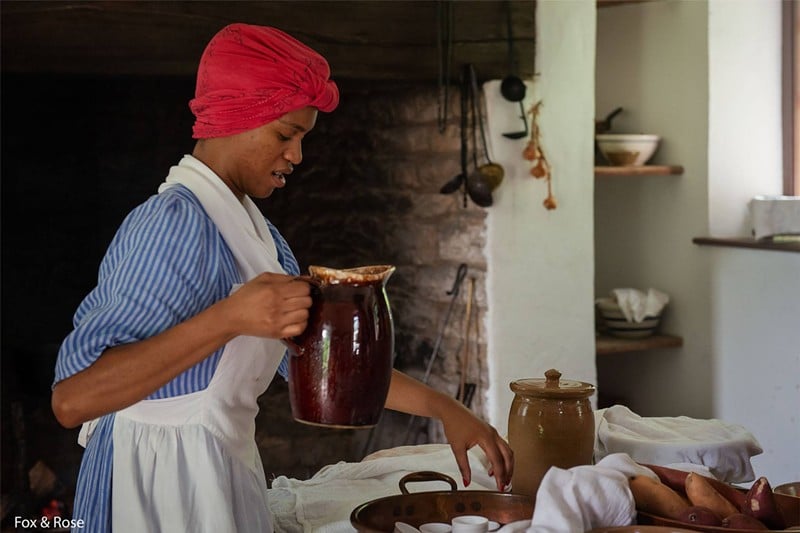
Back to locust grove
After my visit to Farmington, it was time to make my return to Locust Grove, since my first visit in 2003. Coincidentally, it was shortly after that visit, in 2004, that Carol Ely began as executive director of Locust Grove. Brian Cushing, program director, who began as a volunteer in 1999, said it was Ely’s arrival that changed how Locust Grove discusses slavery.“She started asking questions that hadn’t been asked before and — [said] ‘We are going to address certain things that we haven’t really talked about before,’” he said.
According to Locust Grove’s website “more than 40 enslaved people labored” there.
Ely told me that as society’s depictions of enslaved people has evolved, so has how historic sites handle their past.
“Everybody’s perspective on this has changed from the days when we didn’t really talk about enslaved people, except for as, quote, ‘servants,’” Ely said. “And the emphasis was always on trying to say ‘Oh, but here they were treated really good.’ I’m not saying they said that at Locust Grove, but, in general, that was really the South’s way of interpreting this.”
By the time Ely arrived at Locust Grove, the staff had begun research to find the stories of enslaved people of Locust Grove. They worked with Dr. J. Blaine Hudson, former UofL dean of Arts and Sciences, a prominent Louisville activist and intellectual who passed away in 2013.
It’s been difficult to find the history of enslaved people because, as you can imagine, slave owners didn’t prioritize preserving the history of such people. But Ely said Locust Grove makes sure to incorporate the information they do have in every tour and all events, versus presenting the information as a separate program.
“So, it’s a topic that you just cannot avoid,” she added.
One problem was that volunteer interpreters who presented the program were white, an obvious challenge in portraying the enslaved African-Americans of Locust Grove. For help, Locust Grove turned to Nefertiti Burton, professor and chair of UofL’s Department of Theatre Arts.
When I reached Burton by phone, I told her I would be hesitant, as an African-American, to interpret the experiences of my enslaved ancestors for the education of white people. But Burton said she thought the role would be far more than that.
“First of all, one would hope it’s not only white people coming through there,” she said. “We all need a full education, regardless of what our race is, regardless of where we’re from, how long we’ve been in this country, we all need to be educated about that. It can’t just be happy stories told because that’s misrepresentation.”
Burton did concede that “the young people in my department, I won’t say that they were necessarily excited about this, but they were at least willing to listen to the opportunity.”
In the end, only one student became a Locust Grove interpreter, Sidney Edwards.
‘It’s an important story’
Edwards is from the small, eastern North Carolina town of Pleasant Hill, and moved to Louisville for UofL’s graduate certificate in African-American theater; it’s the only one in the country. Edwards who described herself as a “collector of experiences,” called her role at Locust Grove a “great character-building opportunity.”As in, creating a character.
She’s researched her role heavily and paid close attention to voice and dialect. She’s long had an interest in history. “My family, especially on mother’s side, are really big on our history and, just recently, at a family reunion on my dad’s side, we were able to trace our family back to slavery. So, that was really exciting.” She said she was driven to become an interpreter because “I think it’s an important story to tell. You’ve got this plantation out there, and it’s telling the story of all these white people, but most of the people that lived on that plantation were black. And they have no way of telling that story.”
“I’ve been to historic sites where they talk about candle making or butter churning, but all you see is white people. And it feels like when you go to those places, we’ve been erased from them. I think that’s mostly because they can’t find people like me who don’t mind digging in there and doing it. Not saying that it’s going to be easy, but what helps me to do it is that I know it’s important work,” she said.
Edwards spends most of her time onsite at the distillery, which Locust Grove’s research indicates was likely run almost exclusively by black women.
What is diversity?
Outside of Edwards, all the local people whom I came across and were associated with plantations and historic homes were white. I asked Cushing, the Locust Grove program director, if maybe this trend toward more inclusive storytelling would lead to more diversity on staff.I wanted to know where all the black historians were.
Cushing said he’s the only full-time male on staff and that the staff is diverse, albeit not with people of color. “My people are more recent immigrants. In a lot of cases, that is what happened here. I’m largely Lebanese and Irish,” he said. “We’ve all come at this with different perspectives already ... So, having African-American staff here would not seem out of the ordinary at all.”
Actually, it would be.
When I followed up later with Locust Grove, I was told it has never had a full-time staff person of color, at least who anyone remembers.
Locust Grove has been open to the public since 1964.
Not one single full-time staff person of color in 54 years.
In that span of time, it has had a few African-American board members and partnered with African-American interpreters and re-enactors from the community. So, it might be possible to argue that it has had access to the right connections and networks necessary to diversify their staff and yet it hasn’t happened.
Ever.
Can an all-white team, regardless of the makeup of their whiteness, adequately do the work of telling this history?
Women — and I’d say rightfully — are quick to push back when all-male committees try to create legislation about our bodies, or panels made of men want to be the authority on the plight of women in the workplace.
To gain more insight about this blinding whiteness in public history, I tracked down a black historian working on a historic plantation.
Front view of Farmington Historic Plantation, March 19, 1934 | Photo by the Historic American Building Survey and provided by The Filson Historical Society
Plantations as black spaces
Niya Bates is the public historian of Slavery and African-American Life at Monticello, the former estate of Thomas Jefferson, in Charlottesville, Virginia. I spoke with Bates the Monday following the 2017 white supremacist takeover of Charlottesville that left one protester dead. The timing only reinforced the importance of Bates’ work. I asked her the same question I asked Cushing: Is it possible for an all-white staff of historians to effectively tell the history of a historic plantation?“The answer is no,” Bates said. “You cannot have an all-white staff that is going to tell an inclusive and fair telling of history. You need diversity.”
That has not been the case, generally, but it began to change in the ‘80s, she said. “Of course, racial diversity is not the only form of diversity, and I think museums are going to have to increasingly seek out staff diversity in all types of ways to make sure that our experience is inclusive because I don’t think that you can talk inclusivity and not model that as well.”
Bates also thinks museum boards must be more diverse. “When we diversify where the money is coming from for museums, we’ll have a lot more freedom to tell more inclusive, more genuine things, and I see all of that happening at Monticello,” she said.
Some plantation museums, she said, tell the historic stories exclusively of enslaved African-Americans, or make that the primary focus of tours there, such as the Whitney Plantation in Louisiana and the McLeod Plantation in Charleston. I think this approach is interesting and helps give balance to the overabundance of attention given to the white history of historic sites.
What she told me next changed my outlook on places such as Farmington and Locust Grove.
Bates said that Monticello used to be a “black space” because, like at Farmington and Locust Grove, the vast majority of the people living at Monticello — 115 to 125 enslaved people — were black.
I learned the history of slavery through a white lens, so I had never thought of plantations as black spaces, or felt any ownership over that history.
‘Honoring lives’
Last month, I paid Locust Grove another visit, this time to catch a lecture by Michael W. Twitty, author of “The Cooking Gene” and an acclaimed culinary historian. His topic was “Africa in Our Kitchens: How Enslaved African American Cooks Shaped American Cuisine.” Twitty traced the history of Southern cooking back to various African cultures. After his talk, I asked him what it meant for him to come to places such as Locust Grove in 2018, a site of historic trauma, and be handed a microphone.“A lot of the places you don’t feel welcome are the places doing big weddings. They charge you just to step on the property. It’s a moneymaker for a fantasy. It has nothing to do with honoring people, honoring lives. And here I don’t really feel that,” he said.
“African-Americans — we’re still struggling with the idea of these spaces being our spaces and still struggling with whether or not we can have ownership of these spaces. And the reality is that we ought to be the first line of defense,” Twitty said.
He encouraged African-Americans to attend black-focused programming — and insist on more. As Twitty said, our ancestors may have come here empty-handed, but they were not empty-headed. We are the cultivators of American culture, and we have a right to experience the richness of our roots.
For me, what began as mild outrage over a yoga festival at a plantation actually turned out to be cleansing for my soul. I gained a new understanding and new ownership over public history.
It’s important that our local historic sites are doing the work to ensure the stories of enslaved people are told. But I’m also eager for them to begin the work of making African-American historians just as prominent and visible on their staff as the African-American history they’re telling. •

